With soothing amber light, bookshelves that frame a glowing fireplace and dark oak mouldings that warm the entire room, David Lillico’s kitchen reflects both his love of cooking and passion for Arts and Crafts design.
“I wanted a place that would be a functional kitchen and also blend in with the Arts and Crafts style of the house,” says Mr. Lillico. “It had to be a kitchen that could be intimate and relaxing for myself as well as when I entertain my friends.”
Designed by Thornhill, Ont. architect Haim Riback, the recent 800-square-foot renovation to the Arts and Crafts house in Toronto’s High Park area includes a new kitchen, eating area, bathroom and rear entrance porch. In contrast to the sterility of contemporary industrial kitchens, stepping into Mr. Lillico’s kitchen is like being enveloped in a cocoon of warm colour, serene light and artistic furnishings.
“I find the Arts and Crafts a cosy and nesting style to come home to,” says Mr. Lillico, a Toronto lawyer. “It conveys warmth, but it’s also a no-frills style without any unnecessary ornamentation.”
The Arts and Crafts movement that was popular at the turn of the 20th century delivers an interior design that is warm and comfortable, as well as adds a simple elegance to our homes. In addition, the organic characteristics of Arts and Crafts design, tied to a growing interest in environmentalism, has a definite appeal. The simplicity of construction, the emphasis on natural materials and the handmade qualities of the furnishings are a good fit with individuals who are balancing a modern aesthetic in a traditional atmosphere.
According to Mr. Lillico, the Arts and Crafts style is based on the principle that everything should be both useful and beautiful.
“The movement began in England in the 1850s with the ideas of critic John Ruskin and designer William Morris, who reacted against the loss of hand craftsmanship during the Industrial Revolution,” says Mr. Lillico. “They believed society would benefit from a return to a system in which workers were valued and fine hand crafting was highly regarded.”
In reaction against the over-ornamentation of Victorian interiors, Arts and Crafts furniture was designed with natural wood grains, clean lines and exposed joints to showcase the fine craftsmanship. Mr. Ruskin and Mr. Morris felt that pride of workmanship and a sense of accomplishment went hand in hand with honest design and natural materials.
In Mr. Lillico’s kitchen, pride of workmanship and natural materials are reflected in the finely crafted glass cupboard doors, delicate organic lampshades and hand-made furniture. Contemporary appliances such as the stainless steel refrigerator and gas stove are compatible with the clean, no-nonsense lines of the Arts and Crafts style. During the design process, client and architect paid close attention to authentic details including paint colours, wood panelling, ceramic tiles and even the historic light switches.
Mr. Riback spent many hours with Mr. Lillico talking about the beauty of Arts and Crafts design and drawing out the client’s ideas. “David has a huge collection of books about Arts and Crafts design and he had a very good idea of what he wanted,” says Mr. Riback. “My job as the designer was to translate his dreams into three-dimensional shape and space.”
Mr. Lillico is a gourmet chef and fan of Julia Child, so a key requirement of the design was to enhance his love of cooking and entertaining. “I love having the dining area off the kitchen,” says Mr. Lillico. “I can build a fire in the fireplace and my guests can sit and have a glass of wine and chat while I’m preparing the meal. The best thing is that I’m not isolated during the preparation. The whole situation is very sociable.”
Counters are composed of a light-coloured quartz that is impervious to staining. Water faucets are period design and the backsplash is made of a cream-coloured subway tile that mirrors the 19th century aesthetic. Walls are washed in tones of ochre and vellum and add to the warmth of the space.
For the kitchen floor, Mr. Lillico used a traditional material called battleship linoleum. Made in the mid-1800s in England, the flooring is made of linseed oil and flax and does not emit any petroleum-based solvents. This natural material comes in a range of colours and true to its name, is a resilient floor choice. The design calls for a coffee colour around the base of the floor to match the dark oak baseboards and uses a lighter “corn” colour in the centre to set off the amber colours of the walls and lamps.
However, the real wow in this kitchen are the full-height cabinets that house Mr. Lillico’s extensive collection of spices, appliances and kitchen gadgets. Built by High Park cabinetmaker Ian Anderson, the cabinets pull, pivot and swing like an intricate Chinese wood puzzle.
Architect Mr. Riback, a former cabinet maker himself, was able to work as a team with Anderson during construction with a true understanding of the craft. “We tried to express David’s love of wood and functional Arts and Crafts detailing,” says Mr. Riback. “We did things with a simplicity and dignity of style rather than an ornate or romantic feel. There are no twirly-whirlies here.”
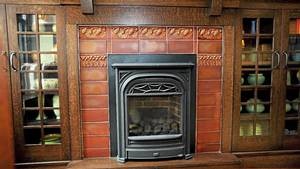
In the same way that Julia Child enjoyed collecting , Mr. Lillico also collects kitchenware and requires substantial storage space for his collection of kitchen equipment. Multiple secret panels that hold spices slide in and out of hidden corners, oversized drawers appear out of nowhere and a super-sized 26-inch by 36-inch cutting board suddenly pulls out of the wall. Most surprisingly, where the conventional kickboard under the cupboards in most kitchens is dead space, Mr. Lillico worked with Mr. Anderson to surround the entire kitchen floor with kickboard drawers that slide out and hold heavy pots and pans that are not used everyday.
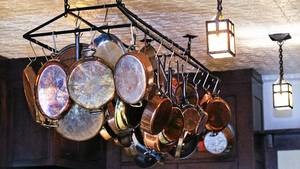
Another influence of Julia Child in Mr. Lillico’s kitchen
is the varying heights of the kitchen counters. “Julia was
a tall person and she believed in having higher than usual counter heights for herself,” says Mr. Lillico. “In this kitchen, we designed the counters with varying heights so that guests and friends could help with cooking and chopping in a variety of ways.”
With sunlight flooding the room from a large south-facing window, the dining area is the focal point of the project and draws guests into the rear of the addition. An archway marks the original rear wall of the house and provides a welcoming entrance to the dining area. The Arts and Crafts dining table and chairs are handsome and sturdy pieces that set the tone for comfort and harmony. The dining area is anchored by a fireplace, which is the symbolic centre of the Arts and Crafts dwelling and invokes an emotional connection of hearth and home.
While fire had always played a role in the home for cooking and heating, it became a stylistic element in the Arts and Crafts, symbolic of refuge and security. Mr. Lillico’s fireplace is designed with a dark-oak mantel, glass-paned cabinet doors and terra cotta tile with a relief of delicate pine cones, oak leaves and acorns.
A key decorative element of all Arts and Crafts furniture and woodwork is the graining of the wood. Instead of applied decoration, the graining became the decoration and celebrated Arts and Crafts respect for nature.
To obtain a more prominent graining, lumber for Arts and Crafts furniture was cut from quarter-sawn white oak. The traditional method of cutting boards was to simply pass the log through the saw blade length-wise to create flat sawn lumber.
In quarter-sawing, the log is cut into long quarters first, then each quarter is cut at an angle to create boards that expose the distinctive ray pattern that is characteristic of white oak. A further advantage of quarter-sawn furniture is that it is less likely to warp. All of the wood in Mr. Lillico’s kitchen is made of quarter-cut oak and stained in a deep colour called “Gunstock”.
A further delight in Mr. Lillico’s kitchen are the delicate light fixtures constructed of wood, copper and bronze frames. The lampshades are designed with amber-coloured glass with a pebbled texture that causes light to shimmer. While no one single lamp is extremely bright, the large number of light sources reflect off the ochre walls and dark oak furniture to infuse the room with a golden candle-like glow.
The kitchen is a perfect showcase for Mr. Lillico’s extensive collection of Arts and Crafts pottery, positioned atop the fireplace and mantel. He is especially fond of the pots and vases in a leafy green glaze with a matte finish that dates from the 1920s. The green colour and organic forms allude to nature and earthy tones of Arts and Crafts interiors.
And while Mr. Lillico’s culinary specialties include Ms. Child’s Boeuf Bourguignon and Poulet Roti, he is especially looking forward to his first Christmas in the kitchen. “This Christmas, I’m going to make Pâté de Canard En Croûte or Boned Stuffed Duck In a Pastry Crust, one of [Julia]Child’s most complicated recipes,” said Mr. Lillico. “I’m really getting geared up for that.”
With sumptuous cooking in a natural, organic setting, Mr. Lillico has found a different backdrop for his life and his love of entertaining friends. The result is a masterpiece of warmth, tactility and the reawakening of the human senses. It is a place that you never want to leave.
Special to The Globe and Mail
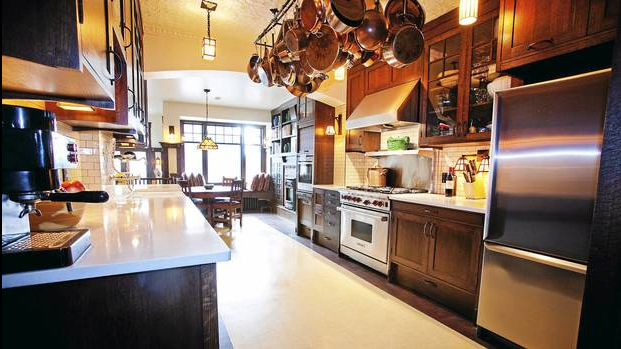
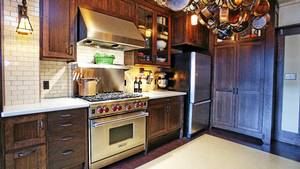
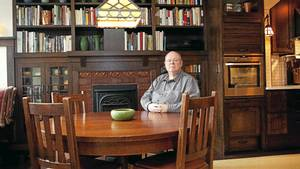
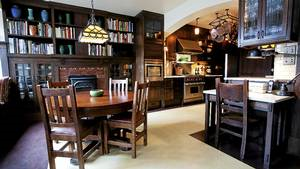



Great Blog John.
I particularly enjoyed reading about Arthur Erickson. You’re such an engaging writer.
Julie Brereton
Thanks Julie. I am grateful for your comments. Please let me know if there is any house or architectural topic that you would like me to explore for you. Thanks! John.